GEORGE FREDERICK BAYLAY
Lieutenant, 1st Cavalry Field Squadron, the Royal Engineers
Killed in Action, 23 March 1918, during the Battle of St. Quentin, aged 20
Buried at Pargny British Cemetery, Somme, France, Grave Ref. II C 6
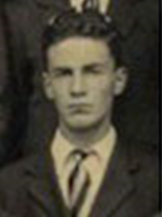
Lieutenant George Frederick Baylay, 1st Cavalry Field Squadron, the Royal Engineers, was killed in action at the age of 20 on 23 March 1918. He was involved in the Battle of St. Quentin which formed part of the defence against the German Offensive in Spring 1918.
He was born in Helensburgh, Dunbartonshire, Scotland, on 23 April 1898. He lived at Ravelin House, Portsmouth.
He was the son of Colonel Frederick Bayley (b.1865), the Royal Engineers (see more below), and his wife Marion Kirkpatrick (b.1871) Baylay. At the time of the 1901 census, when he was aged two, the family lived at Brompton Barracks in Gillingham, Kent.
His sister Jean Hamilton Baylay was born in 1900. She married Philip J. Story in East Grinstead Registration District in 1928, which may help us understand his links to the area.
In the 1911 census he was listed as a scholar at a school in East Blatchington, near Newhaven, East Sussex. He later attended Haileybury School (also attended by alumni including Clement Attlee and Field Marshall Allenby). He attended Sandhurst in 1915 and was commissioned into the Royal Engineers.
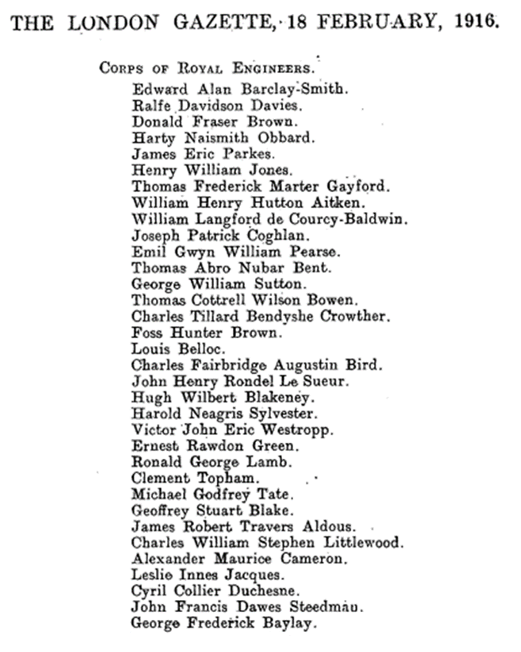
George Frederick Baylay's commission into the Corps of Royal Engineers
Source: The London Gazette, supplements August 1914 - January 1920
Click to enlarge

George Frederick Baylay's promotion to 2nd Lieutenant on 19-02-1916
Source: Quarterly Army List for 31 Mar 1916, Pt 2, Q2, 1916
Click to enlarge
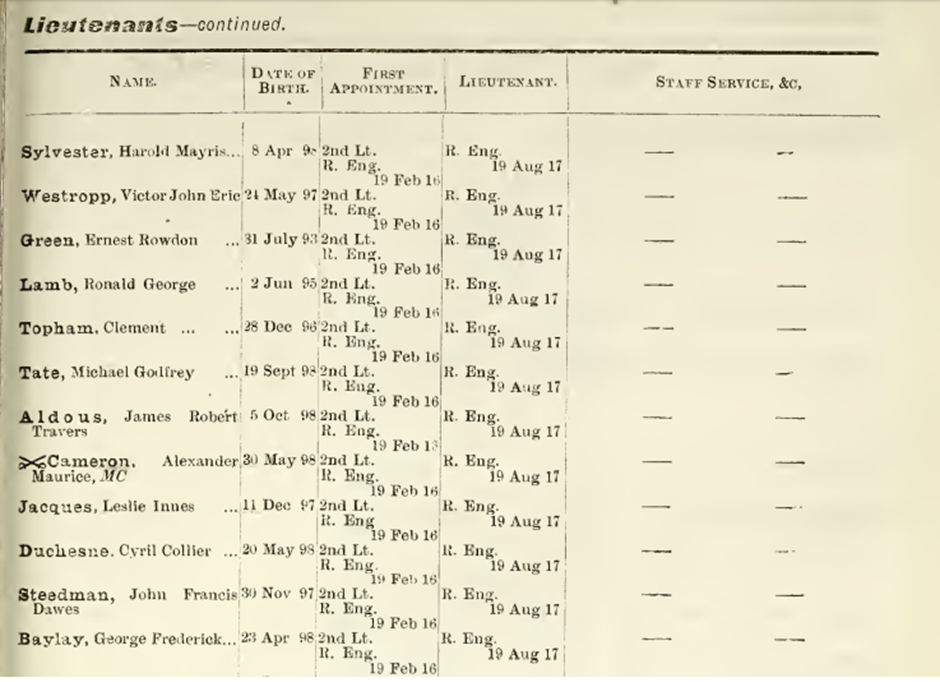
George Frederick Baylay's promotion to Lieutenant on 19-08-1917
Source: Quarterly Army List for 31 Mar 1918, Pt 2, Q1, 1918
Click to enlarge
On 29 September 1917 it was recorded that he was entitled to wear a "Wound Stripe" as authorised under Army Order 204 of the 6 July 1916.
During the German offensive of 21-22 March 1918 the Royal Engineers were tasked with blowing up the bridges spanning the St. Quentin canal. George Frederick Baylay could have been involved in this.

Grave Registration Report Form for George Frederick Baylay
Click to enlarge
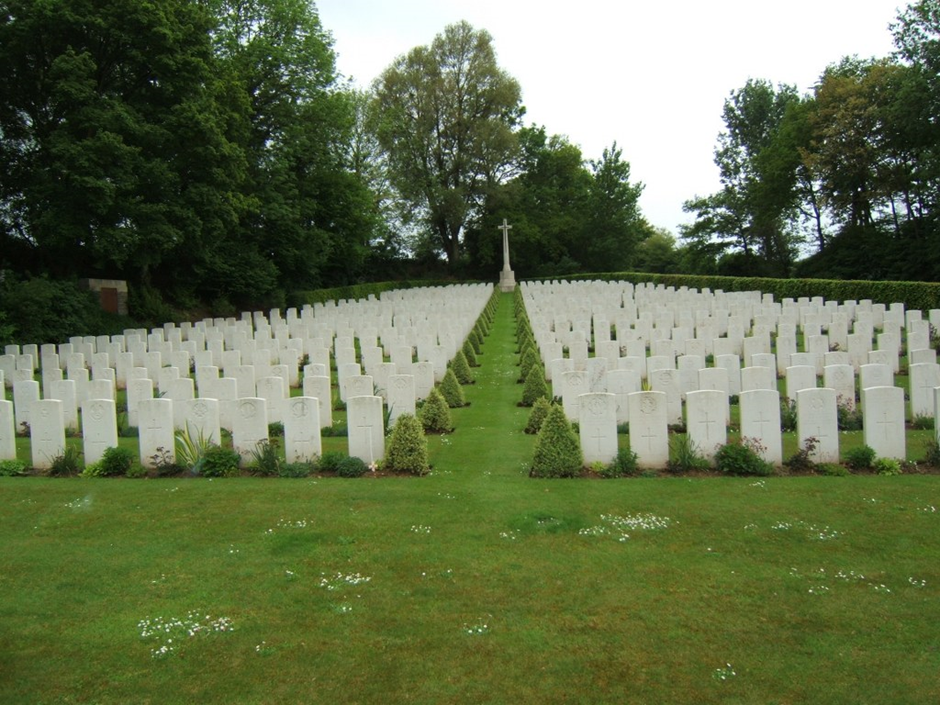
Pargny British Cemetery, Somme, France
Click to enlarge
He is not listed on either of the war memorials in Coleman's Hatch and Hartfield. There is a brass plaque on the south wall of Holy Trinity Church, Coleman's Hatch in his memory, though it has not been possible to ascertain any link to Coleman's Hatch. His father rose to the rank of Brigadier General, which was his rank when he applied for his son's medals in September 1920.

Lt. George Frederick Baylay's entry in the National Probate Calendar
Brigadier General Frederick Baylay
George Frederick Baylay's father, Frederick Baylay, was born on 6 February 1865 in Dublin, Ireland the son of Frederick George Baylay of the Royal Artillery and Ann Louisa Murray.
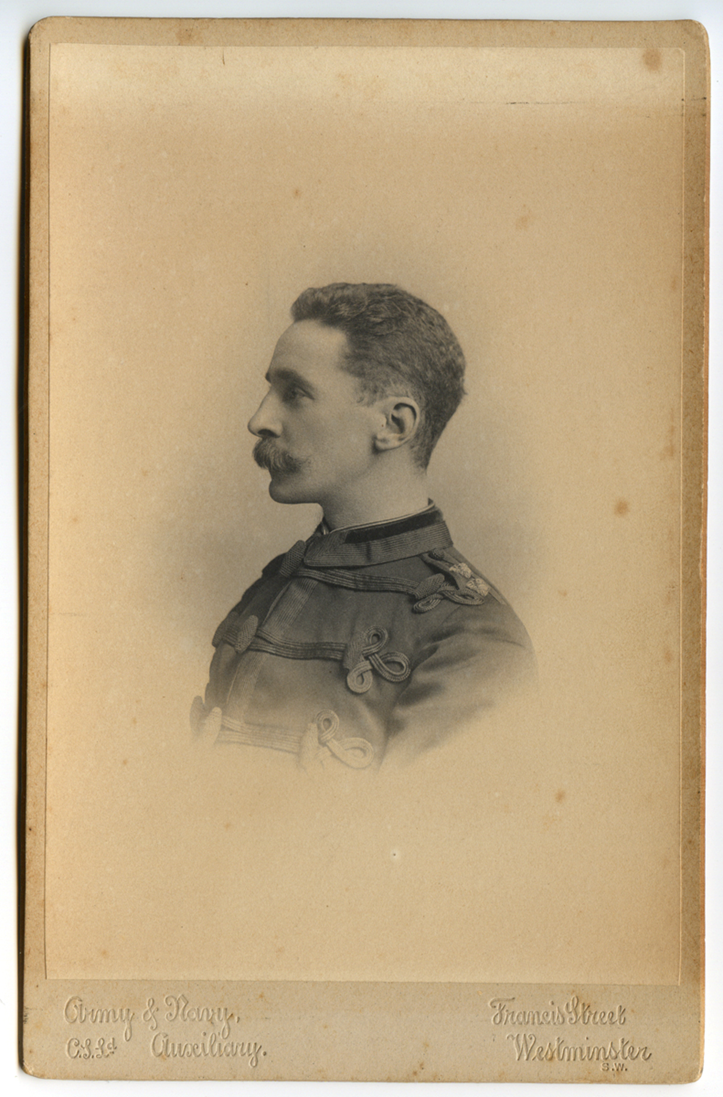
Captain Frederick Baylay of the Royal Engineers
(George Frederick Baylay's father)Photograph taken c. 1893
Click to enlarge
He was commissioned a Lieutenant in the Royal Engineers on 5 July 1884. At the time of his appointment he was assigned to the Submarine Mining Service in Rangoon. He was appointed Captain on 1 April 1893 and was an Instructor, School of Military Engineering - 30 January 1901.
He was appointed Major on 13 August 1901 and Lieutenant Colonel on 9 June 1909. He was appointed Colonel (local rank) while commanding the North Eastern Coastal Defences on 22 June 1912 and full Colonel in June 1914. He went on to half pay on 25 March 1915 based at Headquarters. He retired on 28 June 1919 and was appointed Honorary Brigadier General on 28 June 1919. Baylay was appointed to the Most Excellent Order of the British Empire for war services on 3 June 1919.
Frederick Baylay was married to Marion Kirkpatrick. They had at least two children, George Frederick Baylay (the subject of this study) and Jean Hamilton Baylay.
Frederick Baylay was also a member of the Kipling Society and an Associate of the Institution of Electrical Engineers.
Carol O'Driscoll
8 May 2018
Last updated 2 November 2021
Source:
Frederick Baylay: 'Soldiers of the Queen'.

